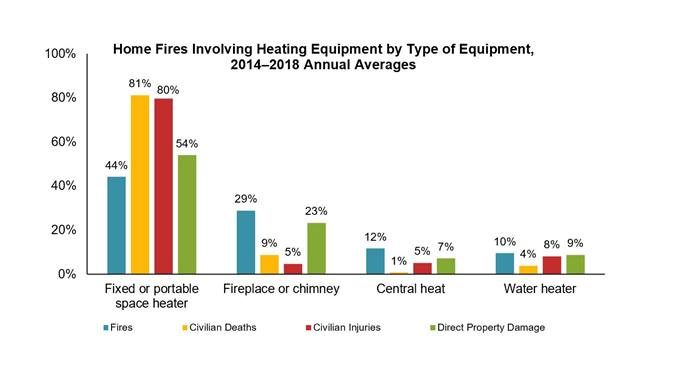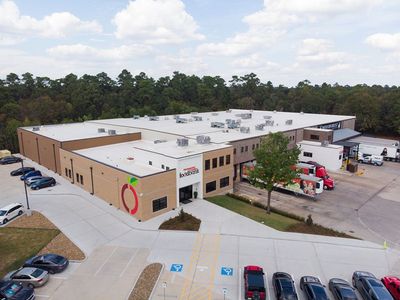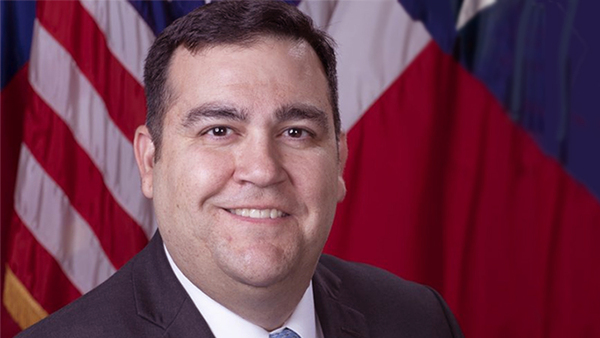- Sections :
- Crime & Public Safety
- Restaurants & Food
- Sports
- More
With Cold Weather on its way, Firefighters Brace for a Spike in Home Heating Fire

THE WOODLANDS, TX -- Temperatures are expected to plummet over the coming days and many residents will be firing up their home’s heating appliances for the first time this season. Parts of Southeast Texas are forecast to reach the lower 30s by Wednesday or Thursday, and many will look to alternative heating devices, such as space heaters and wood burning stoves to heat their home. Home heating fires often occur at the worst possible time, breaking out in the middle of the night while our families are asleep. The number one safety recommendation is to first and foremost have working smoke detectors throughout the home, especially in all sleeping areas. Having a working smoke alarm dramatically increases your chances of surviving a fire.
According to the NFPA (National Fire Protection Association), heating equipment is a leading cause of home fire deaths. Half of home heating fires are reported during the winter months, but with proper precautions, many of these fires can be prevented. The Montgomery County Fire Marshal offers the following tips for staying safe while keeping warm during cold weather.
- Keep anything that can burn at least three feet away from heating equipment, such as the furnace, fireplace, wood stove, or portable space heater.
- Have a three-foot “kid-free zone” around open fires and space heaters.
- Never use your oven to heat your home.
- Have a qualified professional install stationary space heating equipment, water heaters, or central heating equipment according to the local codes and manufacturer’s instructions.
- Have a qualified professional clean and inspect heating equipment and chimneys every year.
- Remember to turn off portable heaters when leaving the room or going to bed.
- Always use the right kind of fuel, specified by the manufacturer, for fuel burning space heaters.
- Make sure the fireplace has a sturdy screen to stop sparks from flying into the room. Ashes should be cool before putting them in a metal container. Keep the container a safe distance away from your home.
- Test smoke alarms at least once a month.
Portable Space Heaters – “Give your Space Heater Space”
Although portable space heaters are involved in only about 1/3 of heating fires, they are the most deadly type of home heating fires, responsible for approximately 3/4 of fatal home heating fires. Many of these deaths occur when space heaters are left on while residents are asleep, or they are left too close to something that can catch fire, such as bedding or upholstered furniture.
Fireplace and Wood Burning Stove Safety
Top 10 Wood burning Tips from the Chimney Safety Institute;
To aid in the prevention of chimney fires and carbon monoxide intrusion and to help keep heating appliances and fireplaces functioning properly, the Chimney Safety Institute of America (CSIA) offers the following safety tips:
1. Get an annual chimney check. Have chimneys inspected annually, and cleaned as necessary, by a qualified professional chimney service technician. This reduces the risk of fires and carbon monoxide poisonings due to creosote buildup or obstructions in the chimneys.
2. Keep it clear. Keep tree branches and leaves at least 15 feet away from the top of the chimney.
3. Install a chimney cap to keep debris and animals out of the chimney.
4. Choose the right fuel. For burning firewood in wood stoves or fireplaces, choose well-seasoned wood that has been split for a minimum of six months - one year and stored in a covered and elevated location. Never burn Christmas trees or treated wood in your fireplace or wood stove.
5. Build it right. Place firewood or fire logs at the rear of the fireplace on a supporting grate. To start the fire, use kindling or a commercial firelighter. Never use flammable liquids.
6. Keep the hearth area clear. Combustible material too close to the fireplace, or to a wood stove, could easily catch fire. Keep furniture at least 36” away from the hearth.
7. Use a fireplace screen. Use metal mesh or a screen in front of the fireplace to catch flying sparks that could ignite or burn holes in the carpet or flooring.
8. Install smoke and carbon monoxide detectors. Place detectors throughout the house and check batteries in the spring and fall. When you change your clocks for Daylight Savings Time, remember to check your batteries.
9. Never leave a fire unattended. Before turning in for the evening, be sure that the fire is fully extinguished. Supervise children and pets closely around wood stoves and fireplaces.
10. The National Fire Protection Association recommends that all chimneys are inspected on an annual basis.
For more information or to download information about home heating safety, please go to
http://www.nfpa.org/~/media/files/public-education/resources/safety-tip-sheets/heating_safety.pdf?la=en

















